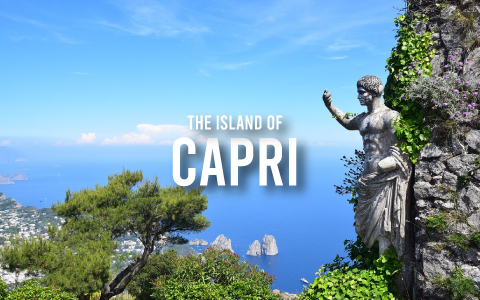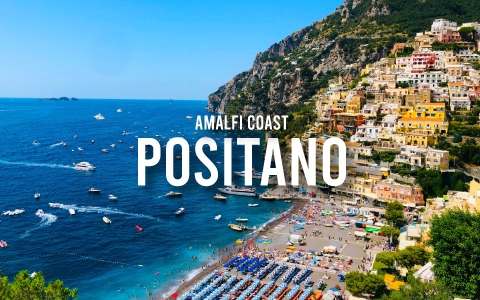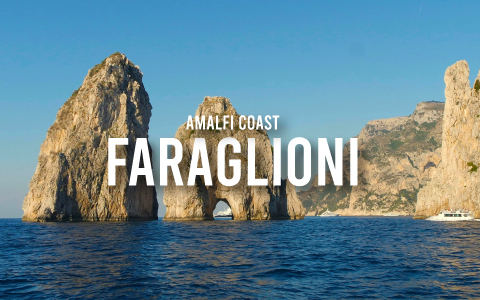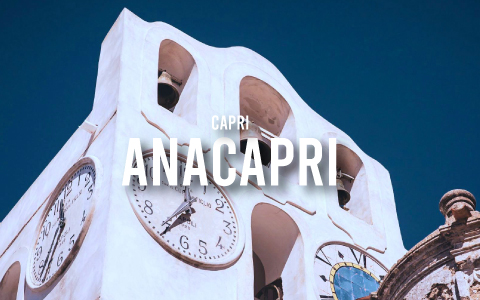
Capri, the Island that Combines History, Nature and Luxury
Surrounded by the blue Tyrrhenian Sea, just in front of the Amalfi Coast, lies the enchanting island of Capri. From ancient Roman emperors to modern-day celebrities, this island has been a favorite escape for those seeking natural beauty, culture, and a touch of luxury. Whether you are drawn to the famous Blue Grotto or shopping, Capri offers an experience worth having at least once in your life.
A Glimpse into the History of Capri
Capri’s storied past stretches back to ancient times. The island was inhabited during the Neolithic and Bronze Ages, but it rose to prominence during the Roman Empire. The Roman emperor Augustus was the first to recognize its beauty, and his successor, Tiberius, made it his retreat from the pressures of rule. He built several opulent villas on the island, most notably Villa Jovis, where he is said to have spent the final years of his reign.
During the Middle Ages, Capri faced invasions by pirates and shifting control between regional powers. Despite these turbulent times, the island retained its mystique. By the 19th century, it began attracting European artists, writers, and intellectuals—drawn by its beauty and bohemian atmosphere. In the 20th century, it became a glamorous retreat for Hollywood stars and wealthy travelers, cementing its status as a global icon.
Why Visit Capri?
- Scenic beauty: Rugged cliffs plunge into clear blue seas, framed by lush vegetation and wildflowers. The views from nearly every corner of the island are postcard-perfect.
- Chic atmosphere: Capri is known for its boutique shopping, fine dining, and stylish piazzas. Whether you’re browsing luxury fashion or sipping espresso in a sun-drenched café, the atmosphere is unmistakably refined.
- Cultural and historical richness: From Roman ruins to centuries-old churches and timeless traditions, Capri offers more than just pretty views—it tells a story.
Top Attractions to See in Capri
There are many interesting places to visit in Capri, from the city centers to the wonders of nature. Here are our favorites!
1. The Blue Grotto (Grotta Azzurra)
Arguably Capri’s most famous natural site, the Blue Grotto is a sea cave that glows with an ethereal blue light. The magical color comes from sunlight passing through an underwater cavity and illuminating the water from beneath. Small rowboats carry visitors through the narrow entrance, and while it’s a short ride, it’s unforgettable.
2. Piazzetta di Capri
The heart of Capri town, the Piazzetta (officially Piazza Umberto I) is a bustling square surrounded by cafés and shops. Often called the “salotto del mondo” (the world’s living room), it’s a perfect spot to people-watch and absorb the island’s vibrant social life.
3. Villa Jovis
Perched on a cliff on the eastern side of the island, the ruins of Villa Jovis are an example of the ancient Roman grandeur. As we have said, this expansive villa once served as the imperial palace of Emperor Tiberius. The views from the top, stretching across the Bay of Naples, are as stunning today as they were two millennia ago.
4. The Faraglioni Rocks
These iconic rock formations rise dramatically from the sea off the island’s southeastern coast. The three spires—Stella, Mezzo, and Scopolo—are a favorite subject for photographers and a symbol of Capri. A boat tour around the island offers the best vantage point, including the famous arch you can pass through.
5. Gardens of Augustus
These terraced botanical gardens offer panoramic views of the Faraglioni and the winding Via Krupp path below. Bursting with Mediterranean flora, the gardens are a tranquil spot to soak in the island’s beauty.
6. Anacapri
Quieter and less glamorous than Capri town, Anacapri offers a more authentic, laid-back charm. Visit Villa San Michele, the home of Swedish physician and author Axel Munthe, or take the chairlift to Monte Solaro, the island’s highest point, for sweeping views across the bay.
What to Do on the Island
There are many ways to appreciate the beauty of Capri. A boat trip around the island is the best way to admire its cliffs and explore grottos and hidden coves. Many tours include stops at the Blue Grotto, the Green Grotto, and White Grotto, each with its own character.
Speaking of coves, while Capri isn’t known for sandy beaches, it offers beautiful rocky coves and beach clubs like Marina Piccola and La Fontelina, where you can lounge by the sea in style.
If you are into hiking, Capri has a network of scenic walking paths. One of the most rewarding is the Pizzolungo trail, which winds past the Natural Arch and Villa Malaparte, offering views of sea cliffs and dense pine forests.
After a day spent at the beach or on a boat, it is time to enjoy some food and nightlife. From cliffside seafood restaurants to gelato on the go, the island offers a variety of culinary experiences. At night, the Piazzetta buzzes with energy, and a few exclusive nightclubs and lounges keep the party going for those who seek it.
And for your shopping, visit Via Camerelle. Here you can find designer clothing, handmade sandals, and artisan ceramics. Capri is also known for its perfumeries, such as Carthusia, which crafts fragrances inspired by local flora.
How and When to Get There
Capri is an island, so it’s only accessible by sea or helicopter. The most common way to get there is by ferry or hydrofoil from Naples, Sorrento, or the Amalfi Coast. Once on the island, transportation is by foot, funicular, bus, or taxi. Capri’s roads are narrow and winding, so public transport and walking are often the easiest ways to get around.
Capri is a seasonal destination. The best time to visit is from April to October, when the weather is warm and ferries run frequently. July and August are the busiest months, with high prices and large crowds. For a more relaxed experience, consider visiting in May, June, or September.



